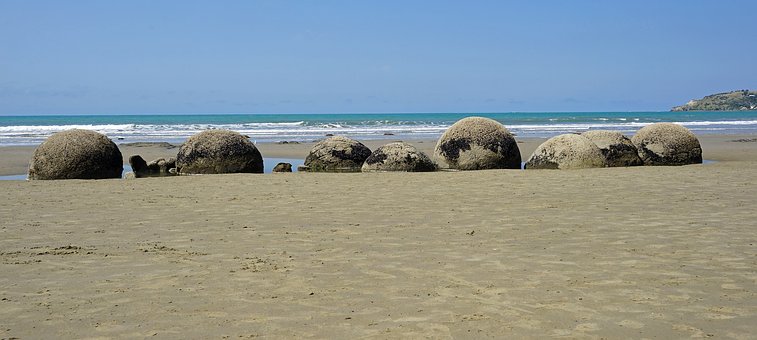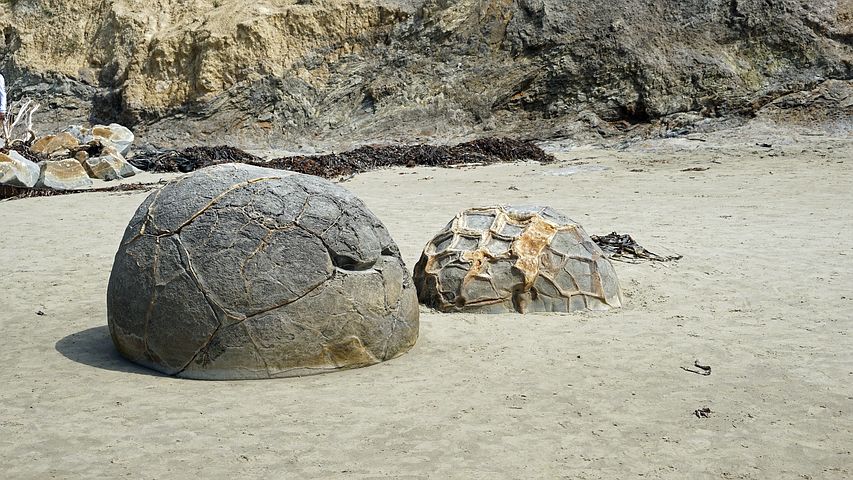STONE BALLS IN THE WORLD

The Moeraki boulders
Perhaps the most famous, thanks to spectacular photographs on the internet, are the Moeraki spherical boulders on the Otago coast of New Zealand. The largest ones weigh several tons and reach a diameter of up to 2.5 metres. Local legend has it that the mythical canoe Arai-Te-Uru crashed here, returning from distant lands with pumpkins and other gifts of nature, and the sea washed ashore petrified vegetables and baskets of goods.

Geologists have a more pragmatic version – the giant carbonate boulders were formed 50-60 million years ago in the muddy sediments of the coastal zone of the marine basin. Inside the boulder is usually a “nucleus” – a fossil or accumulated carbonaceous material to which calcium carbonate or calcite was drawn. During decomposition, the organic matter creates an alkaline environment around it and the calcium contained in the water precipitates on the surface of the germ in the form of calcite, which binds the sand and mud around the “nucleus”. The result is compacted concretions of spherical formations of sandstones, shales and mudstones that are more resistant than the surrounding rocks. The waves have been shaping them into a perfectly spherical shape for millions of years.
Costa Rican stone balls
Costa Rican stone balls are also widely known. In the Dikis River delta on the Pacific coast, more than three hundred stone balls up to 2.57 metres in diameter and weighing up to 20 tons have been counted. Some are carbonate boulders, such as the Moeraki boulders, but there are also artificial ones made from harder rocks such as gabbro and granodiorite. Scientists believe that when the Indians saw natural stone balls, they made them an object of worship and also began to make balls themselves out of rounded boulders of harder rock.
Author: Ing. Václav Vachuška
